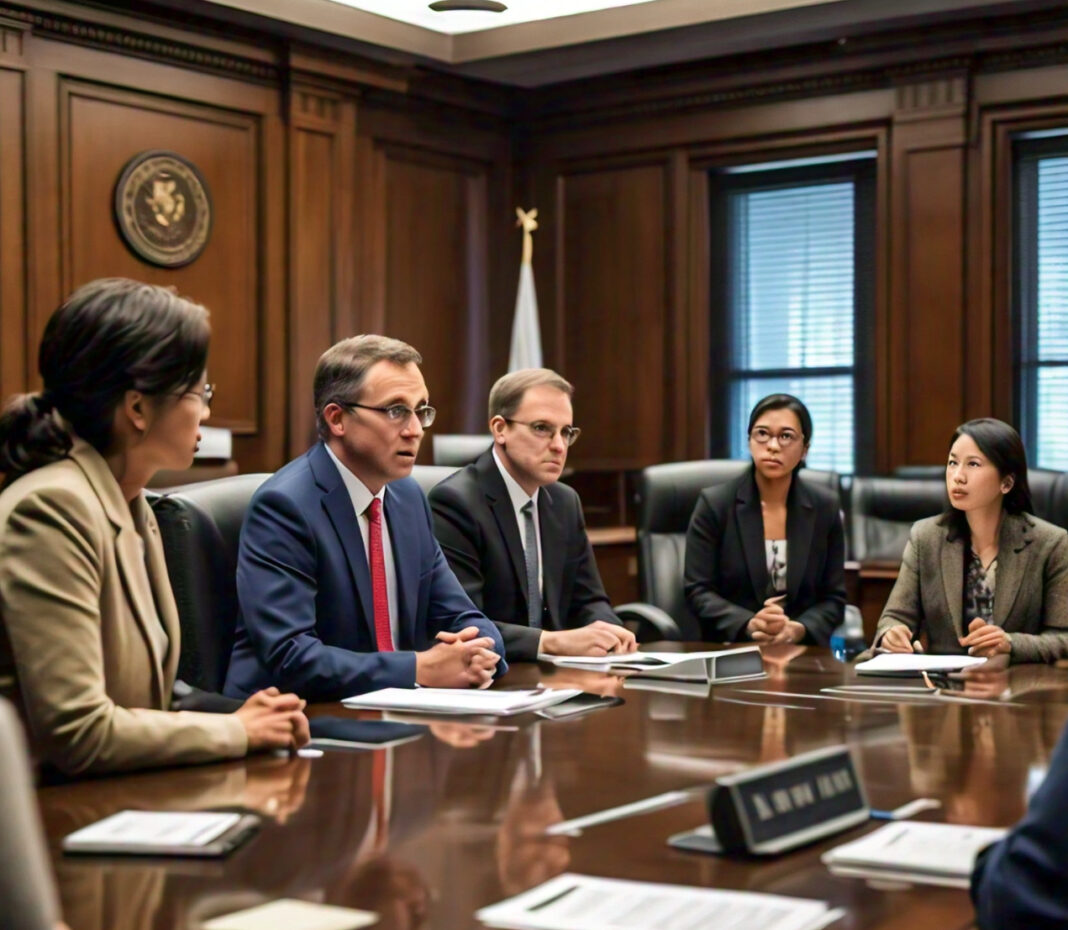Have you ever wondered how the rules of our society come into being? The process from idea to law is rather intriguing and lies at the very core of democratic rule. In this article, we explore the world of lawmaking and explore how bills become laws on a step-by-step journey through the legislative process.

This knowledge is important for the student of politics and generally for the interested and involved citizen who thus understands how government works. It is the guideline as to how societies address problems, create new opportunities, and shape their future. Therefore, let us put up our sleeves and demystify the path from bill to law!
The Birth of a Bill: Where Do Laws Come From?
Identifying the Need
Every law starts with the identification of a problem or opportunity. This may be inspired by sources including, but not limited to:
- Individual citizens bringing issues to their representatives
- Interest groups advocating for causes
- Government agencies determining regulatory needs
- Issues spotted by lawmakers within their communities
Sometimes, mega events or disasters instigate the need for new laws. For example, a natural disaster may lead to the development of laws on emergency preparedness. Similarly, an investment scandal could lead to an increase in banking regulations.
Writing the Bill
Once an idea has attracted attention, it is then written into a formal document form known as a bill. In so doing, the following are observed:
- Research: Gathering information on the issue at hand and existing laws
- Consultation: Consultation with experts, stakeholders, and those who would be affected by the law
- Legal review: The use of precise language and legal accuracy
- Refinement: Several drafts to take care of possible contentious issues
This should result in a document clearly stating the intention of the proposed law and its application.
Introduction of the Bill: The Start of the Procedure in Congress
Getting a Sponsor
For a bill to be considered officially, it needs a sponsor-a member of Congress who introduces the bill. Most bills will have a number of co-sponsors in hopes of showing that there is widespread support. This often affects the viability of a bill-the more co-sponsors and the greater the variation in co-sponsors, the better chance there is that the bill will gain traction.
Assigning a Number
Once introduced, the bill is given a number. If in the House, the preface “H.R.” with a number is taken; if in the Senate, the preface is just “S.” with a number. This makes it easy to track the bill through the process of becoming a law.
First Reading and Referral
The bill’s title is read from the floor of the chamber, a procedural step known as the “first reading.” Today, this is little more than a formality. The next step is to refer the bill to the appropriate committee-a group of individuals appointed to consider the bill because its subject matter falls under their area of responsibility.
Committee Action: Where the Real Work Begins
The Committee System
Most of the detailed work in crafting legislation happens in committees. These are smaller groups of legislators specialising in specific areas such as agriculture, education, or foreign affairs. In order to understand how the legislative process works, one needs to know how committees work.
Subcommittee Review
Large committees often divide their work among subcommittees. Such smaller groups can do the following:
- Conduct hearings to gain further information
- Modify the language of the bill
- Vote whether or not to refer the bill to the full committee
Many bills don’t make it beyond this stage, thereby “dying in committee.”
Full Committee Consideration
If a bill survives subcommittee, it is referred to the full committee where:
- Additional hearings can be held
- Amendments can be offered and voted on
- Final vote on whether to report the bill to the full chamber
Committees can also “table” a bill, which virtually ensures that it will not move forward.
The Committee Report
If the committee votes to report out the bill, it produces a report that summarizes:
- What the bill is intended to do and what its effect will be
- Any amendments made during committee deliberations
- Why all members of Congress should consider the measure
This report becomes part of the official record on the bill and may be considered by other members when voting.
Floor Action: The Bill Goes Public
Scheduling for Debate
The majority leadership in each chamber decides when and whether a bill will be debated on the floor. The House Rules Committee determines the terms of debate, while the Senate process is more flexible.
Floor Debate
During the course of the floor debate:
- Supporters and opponents can speak to the bill
- Amendments may be offered and voted on
- Time for debate is usually limited, especially in the House
This is often the most publicly visible part of the legislative process, as these debates may be covered by C-SPAN or other media sources.
The Vote
After debate, the bill is voted on. In most cases, a simple majority wins passage of the bill. Voting methods include:
- Voice vote: Members shout “Aye” or “Nay
- Standing vote: members stand to be counted
- Recorded vote: each member’s vote is recorded electronically or by roll call
If the bill passes, it goes to the other chamber of Congress. If it fails, it might be reintroduced at a future session.
Crossing Over: From One Chamber to the Other
The Process Repeats
If a bill passes one chamber, it advances to the other chamber, where the process essentially begins anew:
- It’s referred to committees
- Debated and possibly amended
- Voted on by the full chamber
This dual-chamber process is intended to ensure the deliberation of each bill.
Reconciling Differences
If the second chamber passes the bill with changes, those differences must be reconciled. This can happen in two ways:
This typically involves one of two actions:
- The first chamber may simply accept the changes
- The chambers may go to a conference committee, where members of each chamber negotiate a compromise version
This compromise version from the conference committee must then be approved by both chambers.
The Executive Branch: Presidential Action
Presidential Options
Once each chamber has passed identical versions of a bill, it goes to the President, who has three courses of action he may take:
- Sign the bill-law
- Veto the bill and send it back to Congress with objections
- Take no action for ten days; the bill automatically becomes a law without his signature – unless Congress adjourns; then this is a “pocket veto”
The President can also use a signing statement, which is an explanation of how he believes the law should be understood.
Overriding a Veto
If the President vetoes a bill, then Congress can attempt to override the veto:
- The bill must be voted on again by both chambers
- Both chambers must vote by a two-thirds majority to override
- If successful, the bill becomes law despite presidential objections
Veto overrides are uncommon, which suggests just how significant the presidential role is within the legislative process.
Beyond Passage: Implementation and Oversight
Becoming Effective
Once a bill becomes law, it does not always go into effect immediately. The statute may specify an effective date or the provisions may take effect after a certain period from the date of signing.
Rulemaking
Many statutes mandate federal agencies develop specific regulations so these statutes can be enforced. This rulemaking entails:
- The drafting of proposed rules
- The receipt of public comment
- The revision and finalization of the rules
This can be very time-consuming, often taking several months or even years, but it is crucial in turning general terms of legislation into specific enforceable rules.
Congressional Oversight
It is not as if Congress votes on laws and then proceeds to other matters. Quite the contrary, Congress has a responsibility to ensure that laws are carried out appropriately:
- Committees can hold hearings to review the actions of agencies
- Congress can use changes in funding levels to direct implementation
- Congress can propose new legislation to remedy issues or modernize older statutes
This is a continuous process, in effect, by which laws are empowered to bring about the due effects desired.
Role of the Judiciary
Constitutional Review
Though technically not a part of the law-making process, the judiciary has a crucial role in the interpretation of laws:
- The courts can declare a given law constitutional
- Ambiguous expressions of in-laws can be clarified
- Decisions of the Supreme Court may make Congress change or modify the laws.
Such checks and balances help to ensure that the law does not violate the Constitution and that it is indeed applied justly.
Problems and Controversies in the Lawmaking Process
Gridlock and Partisanship
As politicians have grown more polarized, the process of passing laws has become increasingly difficult. The results are:
- Fewer bills will become law.
- There will be increased reliance on executive orders and agency rulemaking.
- The electorate may feel frustrated as the people’s will regarding popular issues is not being dealt with.
Money and Politics’ Impact
Large campaign contributions and intense lobbying could greatly influence the shaping of legislation. This would raise questions about who gets access to lawmakers, how policy priorities are determined, and the balance between special interests and the public good.
Transparency and Public Engagement
While technology makes the process of legislating more accessible than ever, there is yet some concern about
- The complexity of the process that prevents or discourages citizens from engaging in it
- “Backroom deals” taking place outside of the public’s view
- The speed at which bills sometimes move leaves little time for any type of public input
Conclusion: The Ongoing Evolution of Lawmaking
How bills become law speaks to the labyrinthine and resilient nature of democratic governance. It is a system designed to be deliberative, to allow for multiple viewpoints, and to prevent hasty or ill-considered legislation. At the same time, it is flexible enough to respond to urgent needs when necessary.
Understanding this process is crucial to engaged citizenship. It helps us look beyond the headlines and sound bites and understand how our society makes decisions that affect millions of lives. Whether you are advocating for a cause, tracking a bill that you care about, or simply trying to be a more informed voter, knowing how laws are made empowers you to participate more effectively in democracy.
As our society continues to evolve, so too will the legislative process. New technologies, shifting social mores, and global challenges will continue to influence how we make laws into the foreseeable future. Yet at the heart of it all are very important core principles: representation, deliberation, and checks and balances, which are more than likely to remain at the centre of how we govern ourselves.
So the next time you read or hear about a proposal for a new law or debate, remember how long the road was from the idea to the implementation. And it is also a way, in democracies, that we are all part of one that we all have the power to influence.






